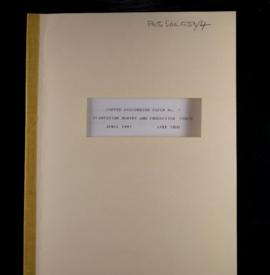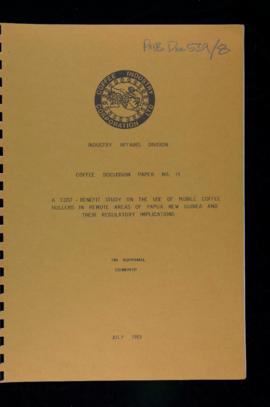- AU PMB DOC 539-63c
- Pièce
Fait partie de Papua New Guinea Coffee Industry Corporation Publications
This document is a Draft report and Volume 2 of the Five Year Strategy Development Plan for the Coffee Industry, January 1989, prepared by McGOWAN INTERNATIONAL PTY LTD and submitted to the Department of Agriculture and Livestock. It discusses the coffee background and production scenarios, processes of Arabica and Robusta coffee, costs of production, finance and credit and coffee research. It covers discussion on the coffee leaf rust problem, covering research, control and development, coffee extension and technical recommendations. This report contains maps, definitions, data sources, tables and other figures.
PNG Coffee Industry Board









